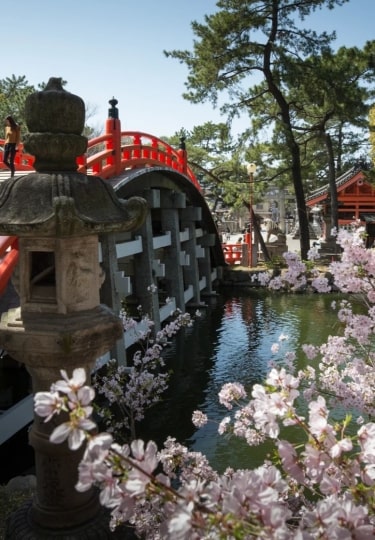What is Osaka known for? This is one of the most vibrant cities in Japan, where centuries-old Buddhist temples such as Shitenno-ji stand next to contemporary towers like the Umeda Sky Building. Osaka is also where you can also experience creative culture like the haunting Bunraku theater doll performances.
“The Kitchen of Japan,” a neon-lit metropolis, also teems with inviting street-food stalls where you can try all kinds of local culinary specialties including takoyaki and okonomiyaki.
So, now it’s time to get revved up about a trip to this magical city and learn more about what Osaka is famous for.
Osaka Castle
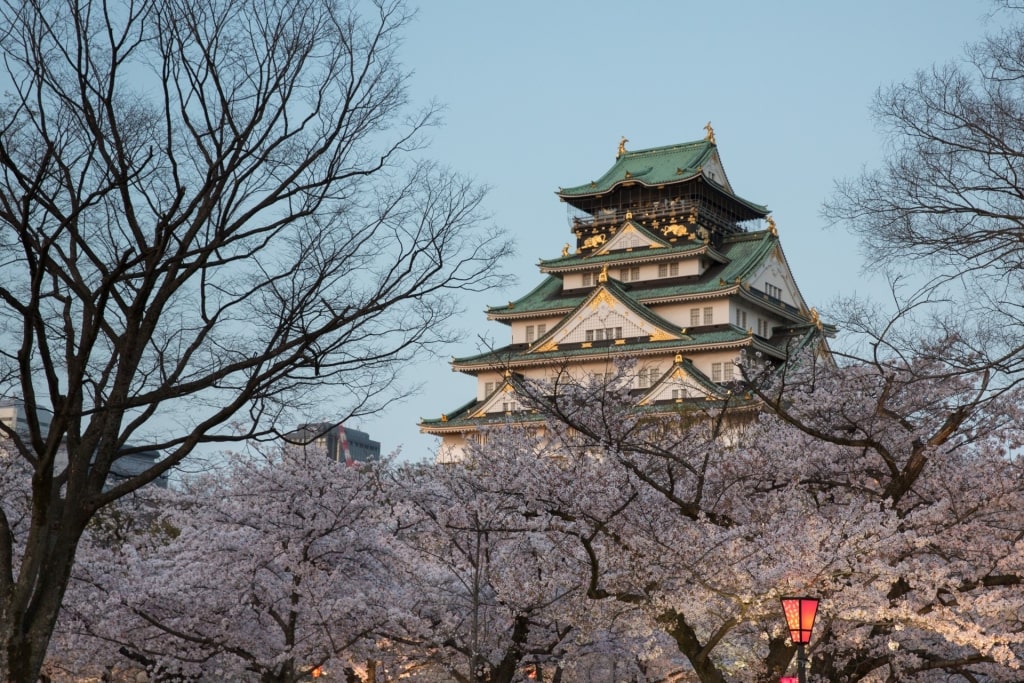
Osaka Castle
Osaka Castle, located on a hill in the center of Osaka, is one of the most recognized historic landmarks in Japan and worth a visit while you’re in town.
Back in the day, in 1583, Hideyoshi Toyotomi, a powerful feudal lord known as one of the Greater Unifiers of Japan, ordered the construction of this castle on the former site of the Ishiyama Hongan Temple.
Over the centuries, Osaka Castle has been destroyed and restored many times. The castle features sturdy stone walls bordering an expansive moat, lush green parkland, and a distinctive white, multi-tiered tower.
The main tower also contains a museum documenting the history of Osaka Castle and Hideyoshi Toyotomi, including relevant artifacts, and armor donned by ancient samurai.
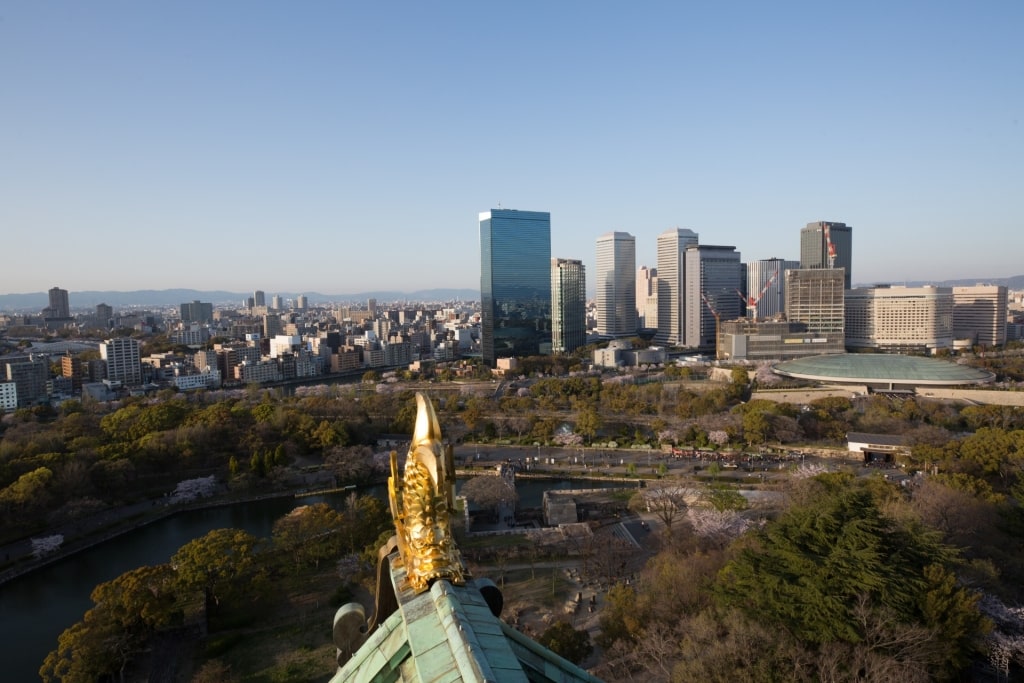
View from Osaka Castle
The top floor will provide you with rewarding views of the city’s skyscrapers, along with the plum and cherry blossom trees that bloom on the grounds in spring. The castle’s impressive moat, with its high walls, also makes this site a wonderful spot for an isolated reprieve from the bustle of modern-day Osaka.
Culture
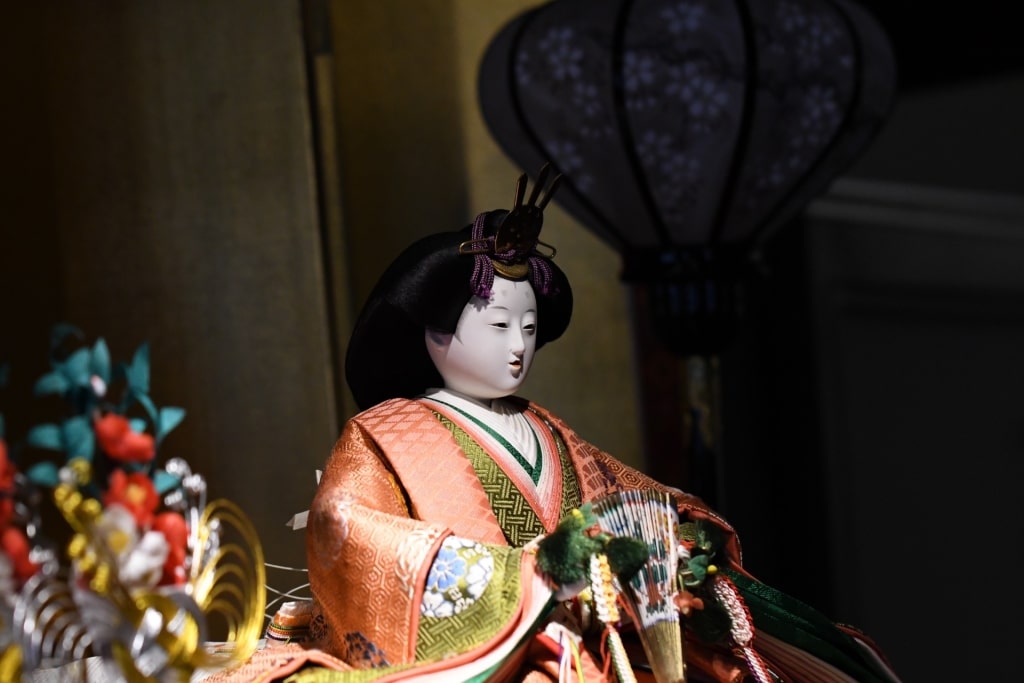
Japanese puppet
The lively and imaginative culture of Japan’s third-largest metropolitan area, which is a mix of new and old, goes a long way to explaining what Osaka is known for.
If you’re interested in the arts, one of the most intricate forms of puppet theater in the world, Bunraku, is performed here. Highly stylized, Bunraku began during the Edo period, from 1603 to 1868, and has been performed for centuries. Osaka is where it began.
A Bunraku performance will treat you to a collection of talented puppeteers, musicians, and storytellers working together in complete unison to tell you a dramatic and enchanting story, narrated out loud.
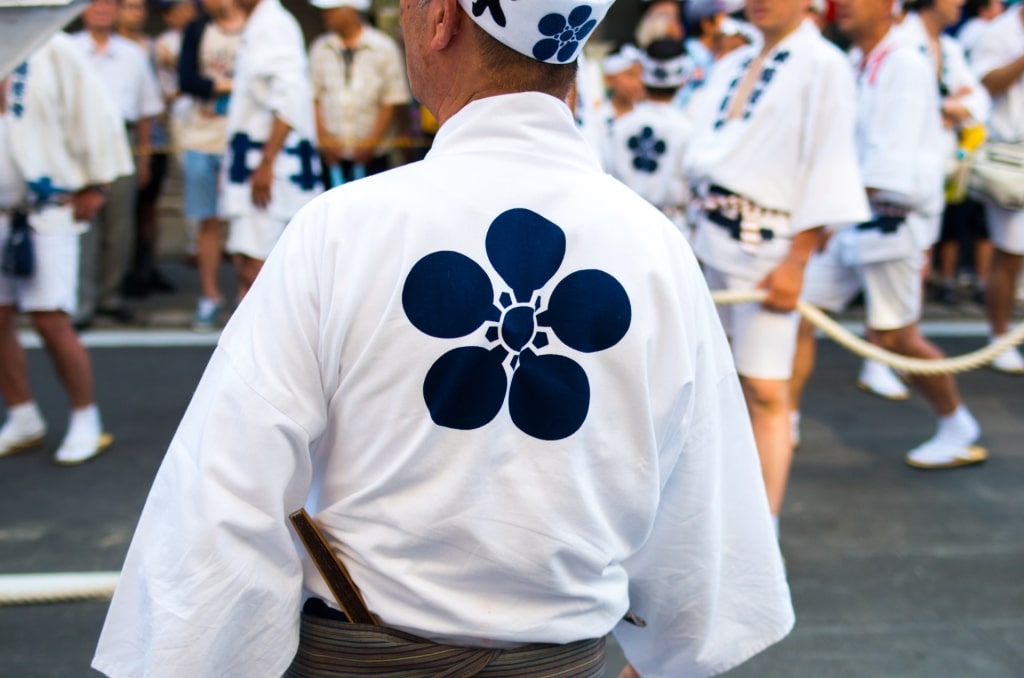
Tenjin Matsuri
Another cultural touchstone in Osaka is the Tenjin Matsuri festival, which takes place during the summer, with a dynamic and colorful procession of boats and floats, dance performances, and lots of fireworks celebrating the gods, especially the deity of scholarship.
Another distinctive cultural aspect to pay attention to while visiting is the fact that the Osaka-jin, the people of Ōsaka, are famous for their humor and frankness compared to the rest of the country.
The Osaka dialect, or Osaka-ben, is quite distinct from the standard Japanese, with its special expressions and animated pitch adding a hint of playfulness to conversations. Due to this fact, the most successful Japanese comedians tend to come from the Osaka area.
Sky-High Views
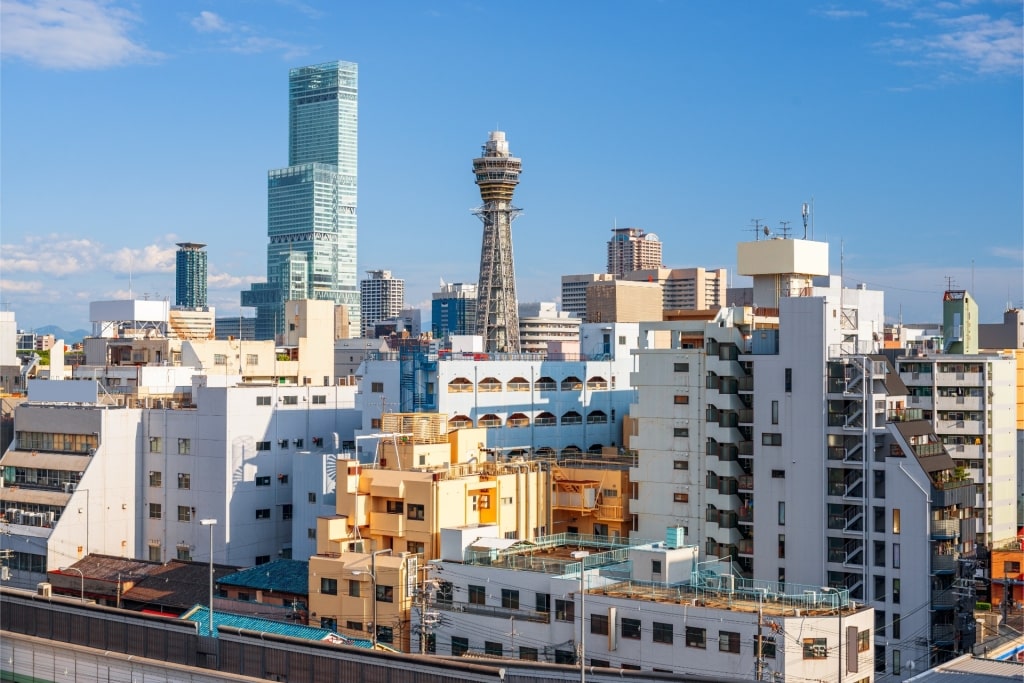
Tsutenkaku Tower
Head to one of Osaka’s most iconic buildings, the Tsutenkaku Tower, for a glimpse of the city’s spirit and personality. Clocking in at a lofty 338 feet tall, this tower, built in 1912, was once the tallest manmade structure in East Asia.
The tower is located in the bubbly Shinsekai District, a great spot for food and shopping. You’ll find some retro-nostalgic artifacts nearby, including spots where you can play vintage arcade games.
The tower’s observation deck is a blast to climb for the stellar views. Inside the tower proper, you’ll also encounter the adorable Billiken Statue, or the so-called “God of Things as They Ought to Be.” Make sure you rub his feet for good luck
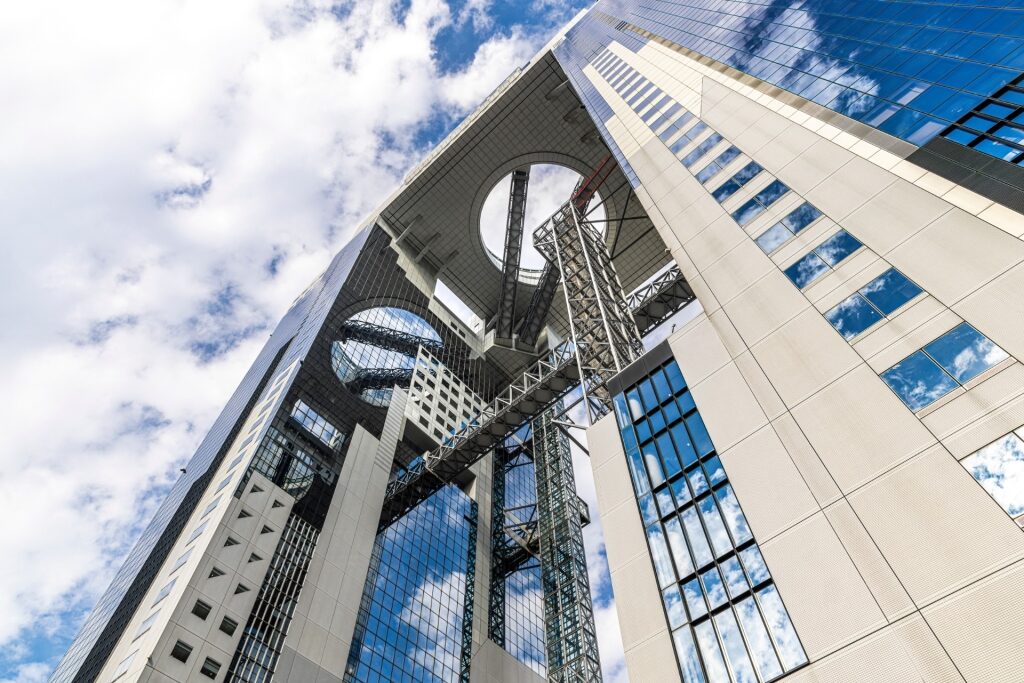
Umeda Sky Building
Shooting up higher into the sky, you’ll find the futuristic-looking Umeda Sky Building. This giant tour de force, one of Osaka’s main tourist sites, has put some of the city’s aesthetic ambitions into physical form.
Opened in 2002, the building combines two 40-floor skyscrapers into a single building. The two towers are joined at their 39th floors by a sky garden called the “Floating Garden Observatory,” which merges futuristic designs with vertigo-inducing views of the urban landscapes below.
You can enjoy the spectacular vistas from the open-air observatory, accessible by an escalator made from glass, which seems to hover in the space between the two towers.
Additionally, the basement of the building hosts a retro food market, where you can grab some delectable Japanese snacks while surrounded by an early 20th-century Japanese vibe, contrasting with the ultra-modern rooftop feel of the Umeda Sky Building.
Cuisine
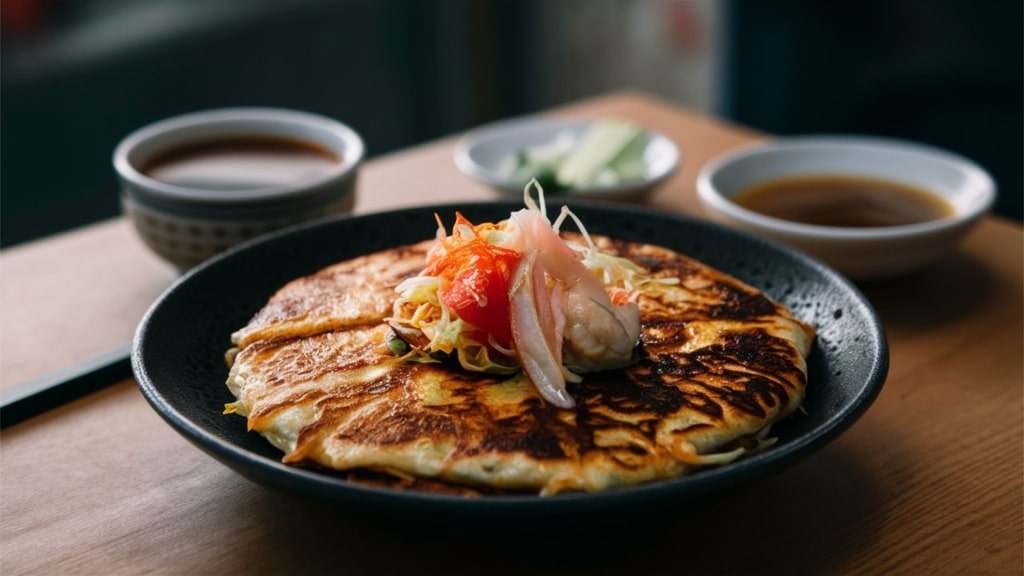
Okonomiyaki
What is Osaka famous for? Food, possibly above anything else. This Japanese city, popularly known as the “kitchen of Japan,” is a place where a real foodie can experience a gastronomic feast.
An Osaka specialty, okonomiyaki is a hearty pancake-like delicacy stuffed with cabbage, meat, and seafood, which is then covered in a sticky soya sauce amalgamation including shiitake mushrooms, kelp, and vinegar, among other tasty ingredients.
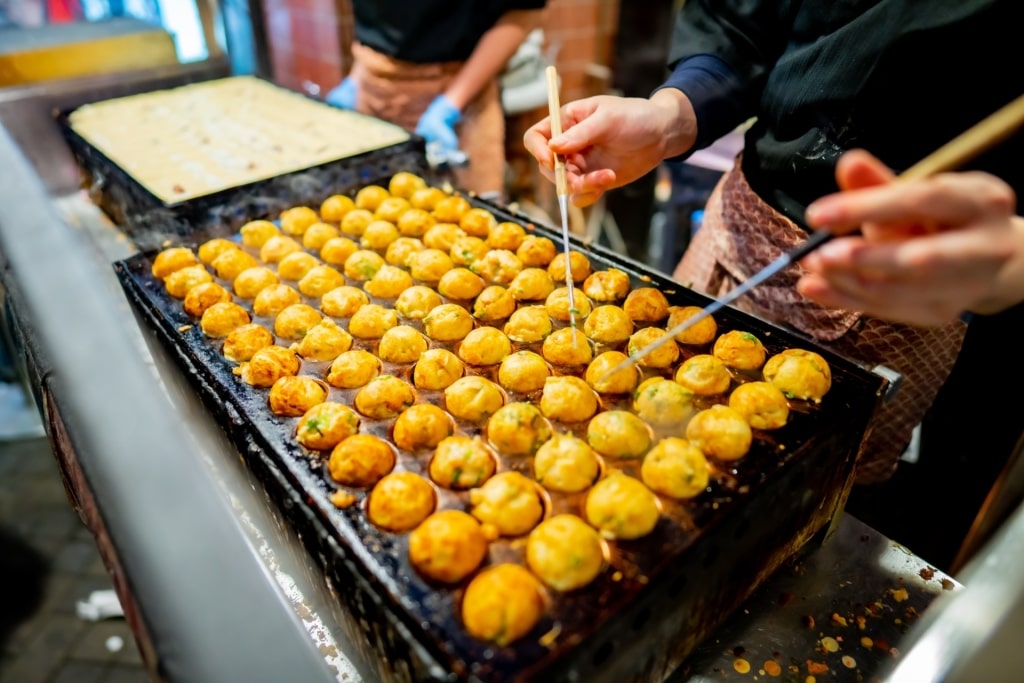
Takoyaki
Another delightful snack—in a town where street eats reign supreme— is takoyaki; these small balls of deep-fried octopus are crispy on the outside, gooey on the inside, and delicious.
If you get a chance, make sure you sample some kushikatsu deep-fried skewered meats and vegetables as well. And, of course, you have to try kitsune udon noodles topped with fried tofu.
For more Japanese food, visit Osaka’s Dotonbori District, which, in addition to the glitz of its neon lights, smells wonderful thanks to the local markets, eateries, and street food vendors.
Dotonbori Entertainment District
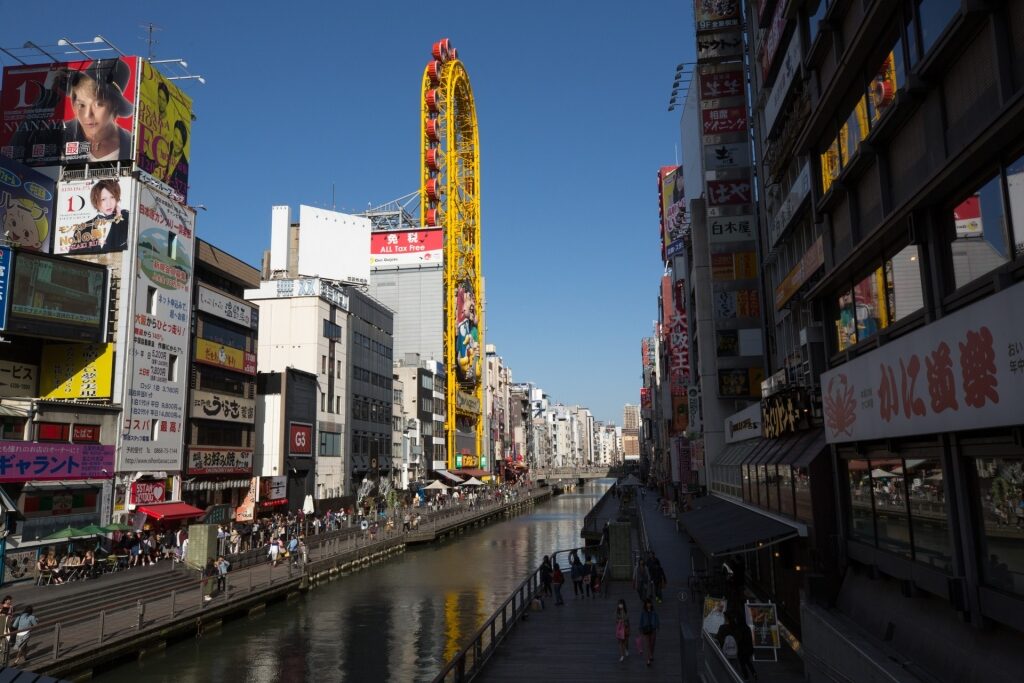
Dotonbori Entertainment District
Looking for a fun time? If the answer is yes, make your way to Osaka’s Dotonbori District, an animated zone that embodies the spirit of the city, providing you with more insight into what is Osaka known for.
While the sun is still out, check out the Dotonbori Canal, popular day and night for its dazzling neon signs and spectacular billboards, flickering and flooding your senses in the most delightful of ways.
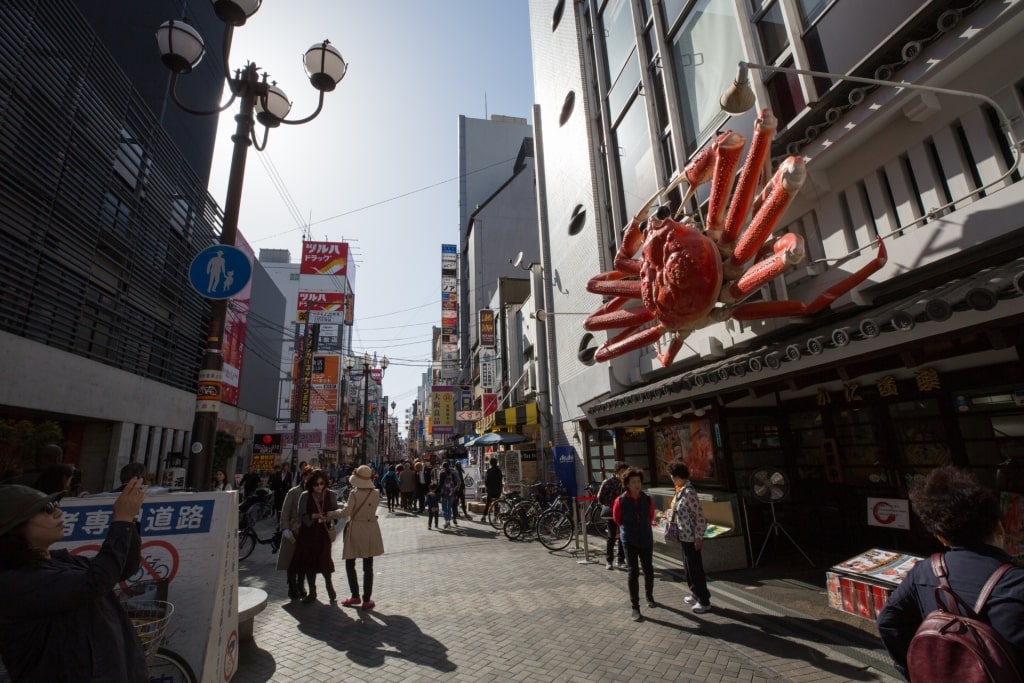
Dotonbori Entertainment District
As you walk toward Ebisubashi Bridge, you’ll notice the continuous stream of food stalls, restaurants, and shops selling Japanese souvenirs, along with street performers offering an array of food, drink, and streetside entertainment.
This is the place to demolish some of the local foods, including takoyaki, or fried octopus balls, and okonomiyaki, pancake-like noodles with meat).
Sumiyoshi Taisha

Sumiyoshi Taisha
A world away from the thunderous energy of the city, you’ll come across Sumiyoshi Taisha, where you’ll find a slice of meditative tranquility at one of the oldest Shinto shrines in Japan.
This ancient shrine, dedicated to the Sumiyoshi Sanjin, the gods of sailing vessels and the sea, is a popular stop where locals can gain the gods’ blessings of good fortune and safe travels.
Sumiyoshi Taisha, the head shrine for around 2,300 Sumiyoshi shrines throughout Japan, was founded in 211. It’s one of the things that Osaka is known for due to its black and red Sumiyoshi-style main halls, plus its gorgeous vermilion bridge, which arches over a pretty pond with a mirror-like surface.
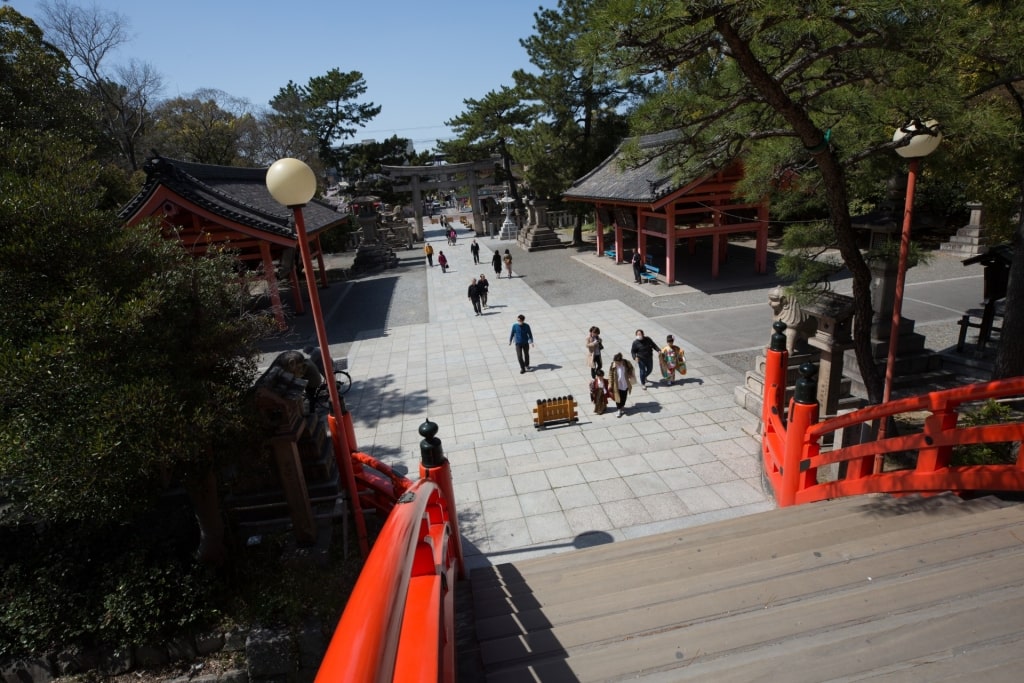
Sumiyoshi Taisha
As you stroll through the grounds, in addition to taking a break from city life, you may, perhaps, gain some valuable insight into the profound spiritual Shinto traditions and devotional practices that have shaped this site and Japan over the centuries.
Read: Beautiful Places in Japan
Museums
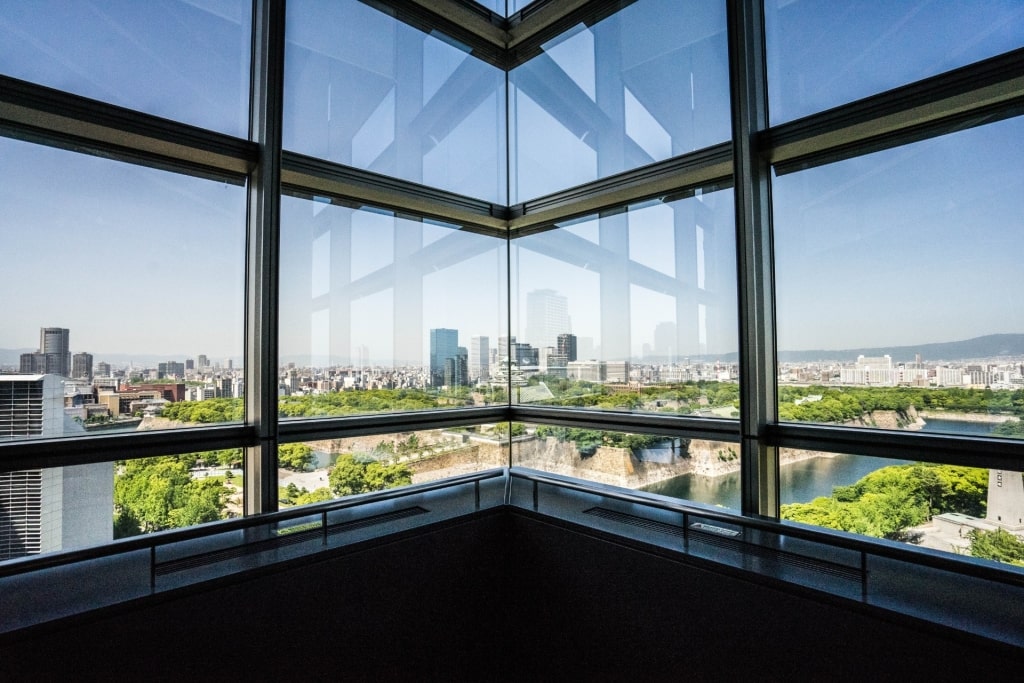
View from Osaka Museum of History
If you want to take a look at the history of Osaka, from its pre-historic days to its modern incarnation, a visit to the Osaka Museum of History is a must.
The museum, close to Osaka Castle, features multimedia displays, along with different-sized models of historical Japan. You can explore ten floors packed with exhibits detailing the evolution of Japan’s ancient capital over the centuries.
You can also check out the sprawling views of Osaka Castle from the museum’s top floors. Exhibits at the Museum of History include detailed, full-size dioramas of important historical sites, large collections of ancient materials, along with some impressive multimedia exhibits.
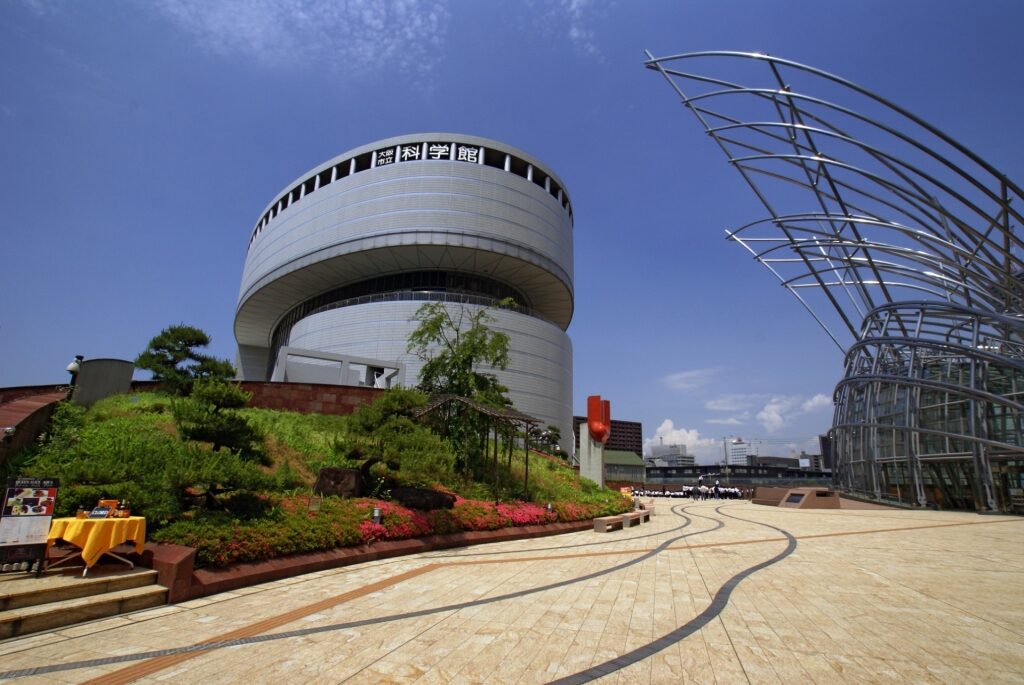
Osaka Science Museum Photo by 663highland on Wikimedia Commons, licensed under CC BY-SA 3.0
The Osaka Science Museum, on the other hand, is where you’ll want to go to learn about nature and the Universe, spread over four floors on Nakanoshima Island. You’ll find interactive displays on astronomy, physics, and other science-related topics here.
One of the highlights is the planetarium, which boasts brilliant shows describing the stars. The Osaka Science Museum promotes curiosity by combining exploration with education, creating an interactive environment that is a joy to experience.
If you’re a fine arts aficionado, the National Museum of Art, Osaka, which features a bamboo-inspired glass and metal exterior entrance, should also make your list of museums to visit.
This artsy space is home to a wonderful collection of modern works from Japan and across the planet, with many thousands of pieces of contemporary art distributed across a series of subterranean galleries.
Shitenno-ji Temple
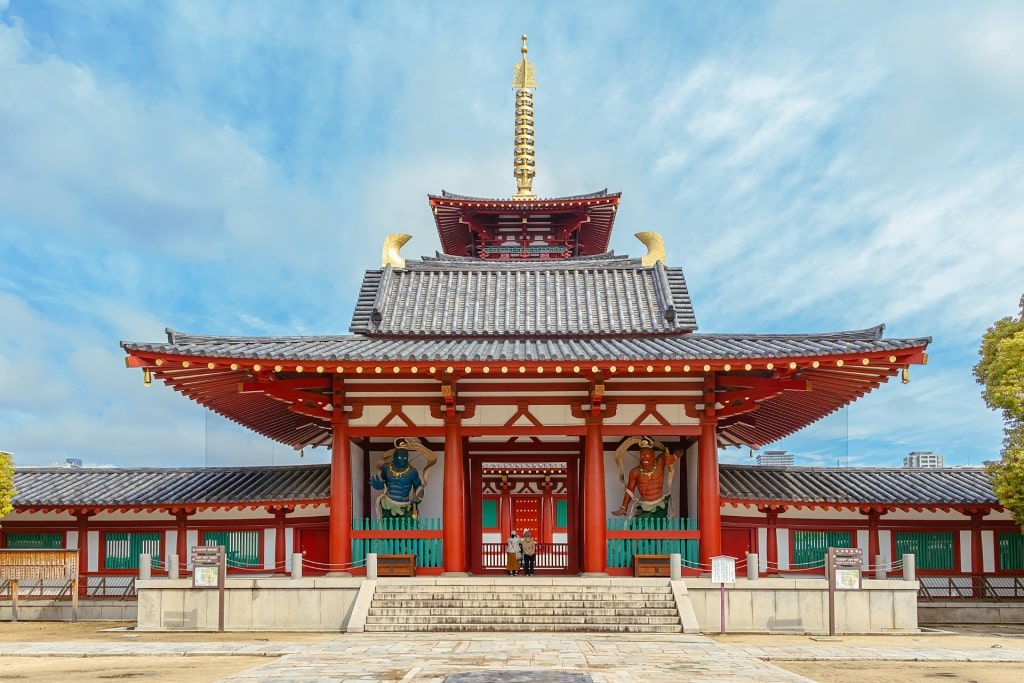
Shitenno-ji Temple
As the oldest officially administered Buddhist temple in Japan, Shitenno-ji Temple is truly a revered landmark of Japanese history and culture in Osaka worth checking out.
First founded in 593 by Prince Shotoku, this temple, rebuilt over the years, served as a conduit for the introduction of Buddhist teachings to Japan. As soon as you step onto this hallowed site, you will likely be struck by its contemplative atmosphere.
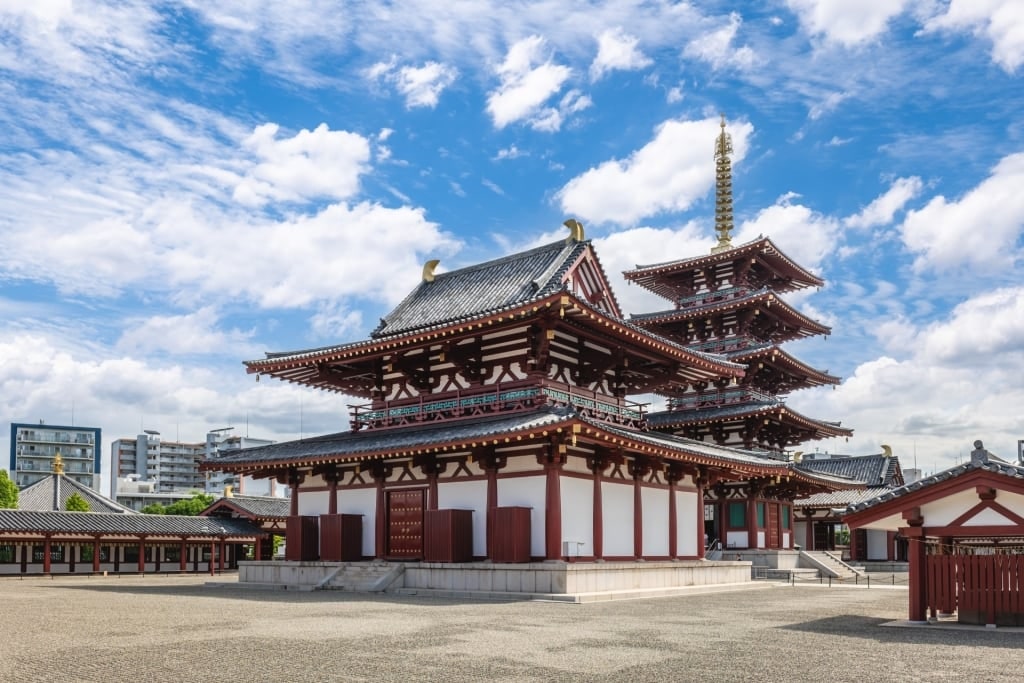
Shitenno-ji Temple
Inside the Shitenno-ji temple grounds, you’ll find an exquisite five-story red, black, and white pagoda, a main hall with Buddhist statues, plus a serene garden and pond, perfect for a peaceful afternoon stroll.
Throughout the year, special festivals and rituals are performed on the temple site, including summer’s Tanabata Star Festival, when your deepest wishes just might be granted. A visit to Shitenno-ji Temple will let you experience some of Japan’s most important religious traditions.
Nature on Display

Osaka Aquarium Kaiyukan
Japan is a mountainous archipelago nation surrounded by water, which is why its relationship with the sea and its many rivers is such an important part of this country’s identity.
One place you can learn more about the creatures living in the ocean is the Osaka Aquarium Kaiyukan, one of the largest and most beautiful aquariums in the world, which will take you on a mesmerizing journey into the vast marine life of the Pacific Rim.
The aquarium’s colorful, modernist architectural style makes it a notable landmark in the Osaka Bay Area. Inside, the displays are divided into multiple floors, plus an underwater glass tunnel, with huge tanks stylishly replicating different oceanic environments, filled with marine life.
You’ll also encounter sea otters playing in shallow water, streams of fluorescent fishes and coral, and, notably, the touch pools, providing you with a hands-on experience with the marine creatures moving about right in front of your eyes.

Osaka Aquarium Kaiyukan
One thing that might “wow” you the most is the aquarium’s whale shark, the largest fish in the ocean, which serves as one of the main attractions here and is part of what Osaka is famous for.
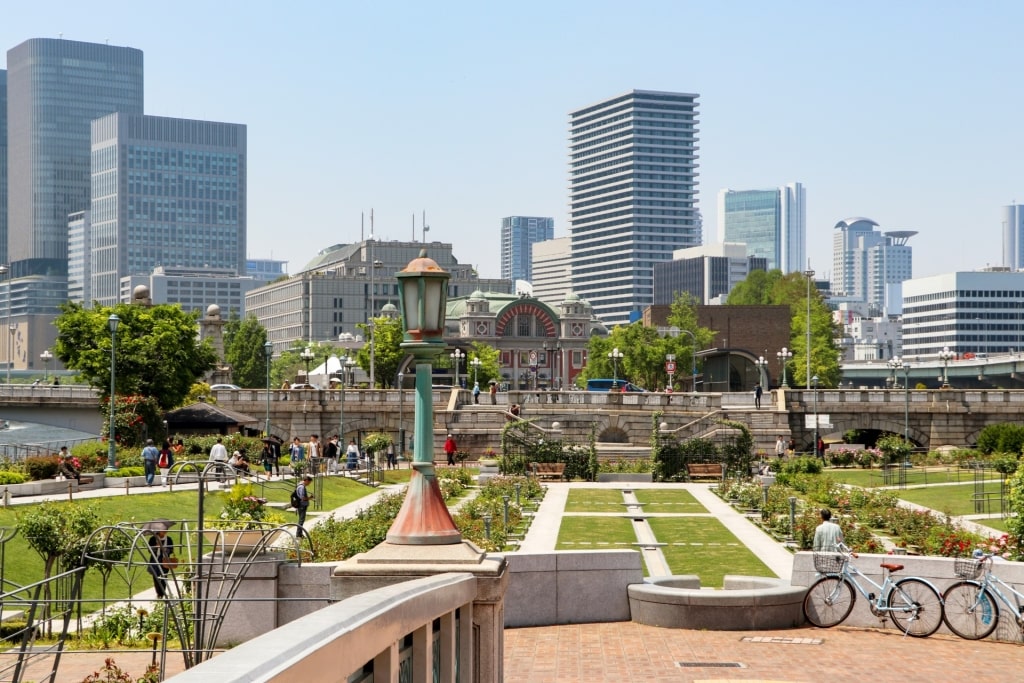
Nakanoshima Park
To spend some al fresco time closer to nature, head to Nakanoshima Park, which, with its refined nature vibe, rests between the Dojima and Tosabori rivers, right in the middle of Osaka.
Nakanoshima is a pleasant park for a stroll or an impromptu picnic. Full of rose bushes, the park, first opened to the public in 1891, is an expansive garden full of greenery which come spring and autumn is ablaze with blooming roses.
Osaka Central Public Hall, on the same island, west of the park, hosts cultural shows and classical music concerts during the year as well.
Read: Off-the-Beaten-Path Japan
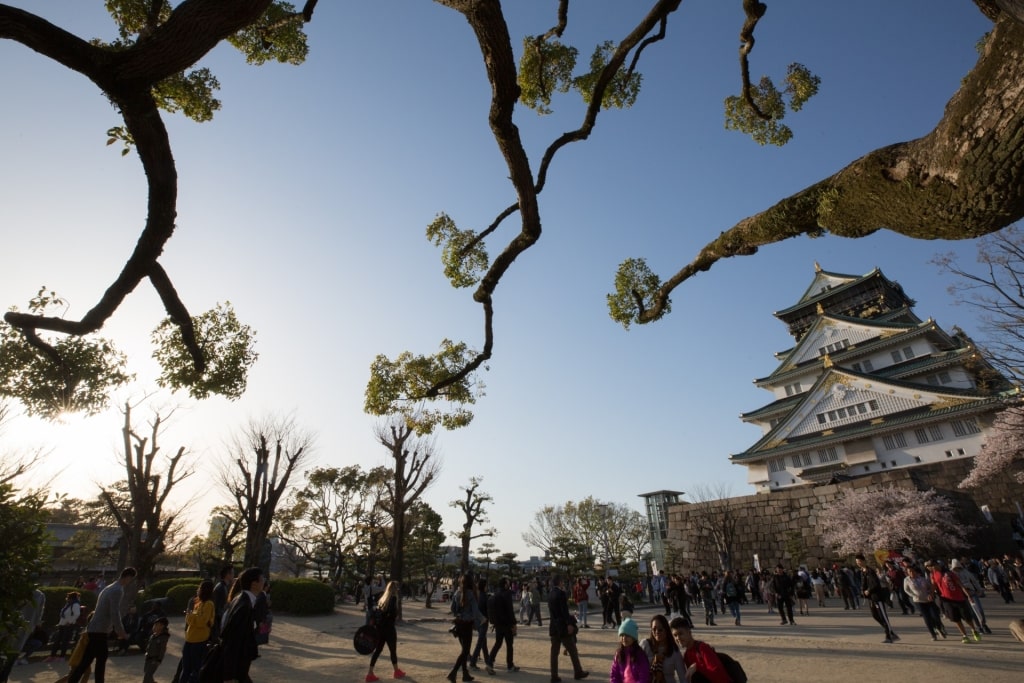
Osaka Castle
Discover what this incredible city is known for on one of Celebrity’s cruises to Osaka.
